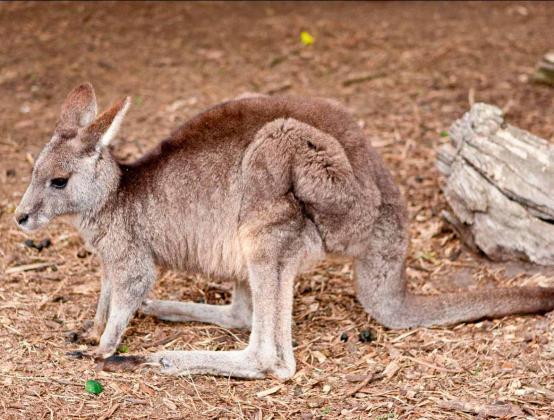
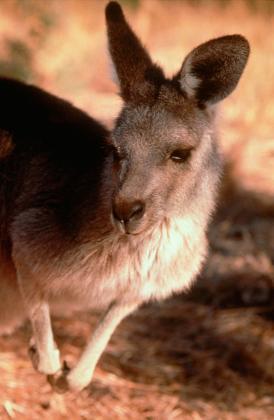
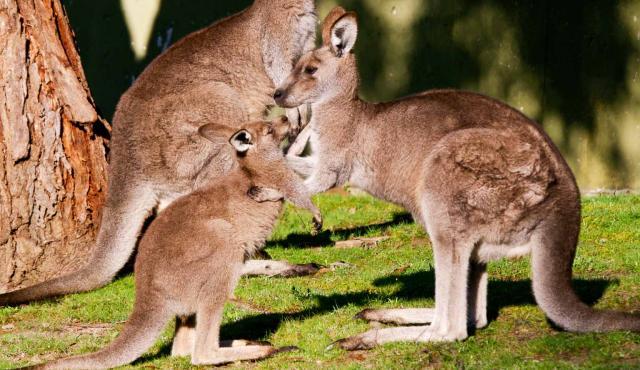
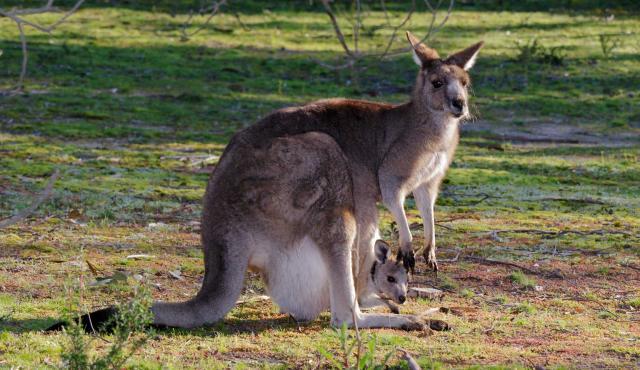
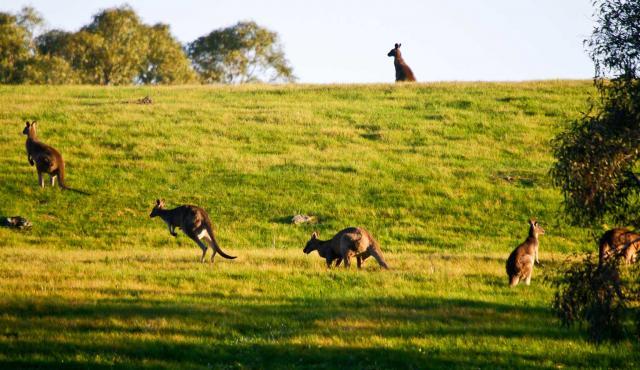
Eastern Grey Kangaroo
Macropus giganteus
| Details | |
|---|---|
| Type | Mammal |
| Group | |
| Other Common Names | Great Grey Kangaroo |
| Biology | Active mostly from dusk to dawn, in small or large groups (mobs). Shelters under trees or shrubs. Can breed at any time of the year but mostly in summer. Gestation takes about 36 days. The joey leaves the pouch at about 11 months of age but suckles from the mother until about 18 months old, and by then another young may be in the pouch. Kangaroos can co-exist with sheep and cattle (except for times of drought or overstocking) as they prefer different plant foods. |
| Distinctive Markings | Grey-brown fur, pale grey underneath. |
| Taxonomy | |
|---|---|
| Phylum | Chordata |
| Class | Mammalia |
| Order | Diprotodontia |
| Family | Macropodidae |
| Genus | Macropus |
| Species | giganteus |
Eastern Grey Kangaroos hop in an upright position with their head held up and their tail curved upwards.
| Interesting Facts | |
|---|---|
| Diet | Herbivore. Eats mainly grasses and herbs but sometimes leaves from trees and shrubs. Needs to drink water regularly. |
| Habitat | Wide range of habitats including grasslands, grassy woodlands and forests. Also pastures, parklands and golf courses. |
| Native Status | Native to Australia |